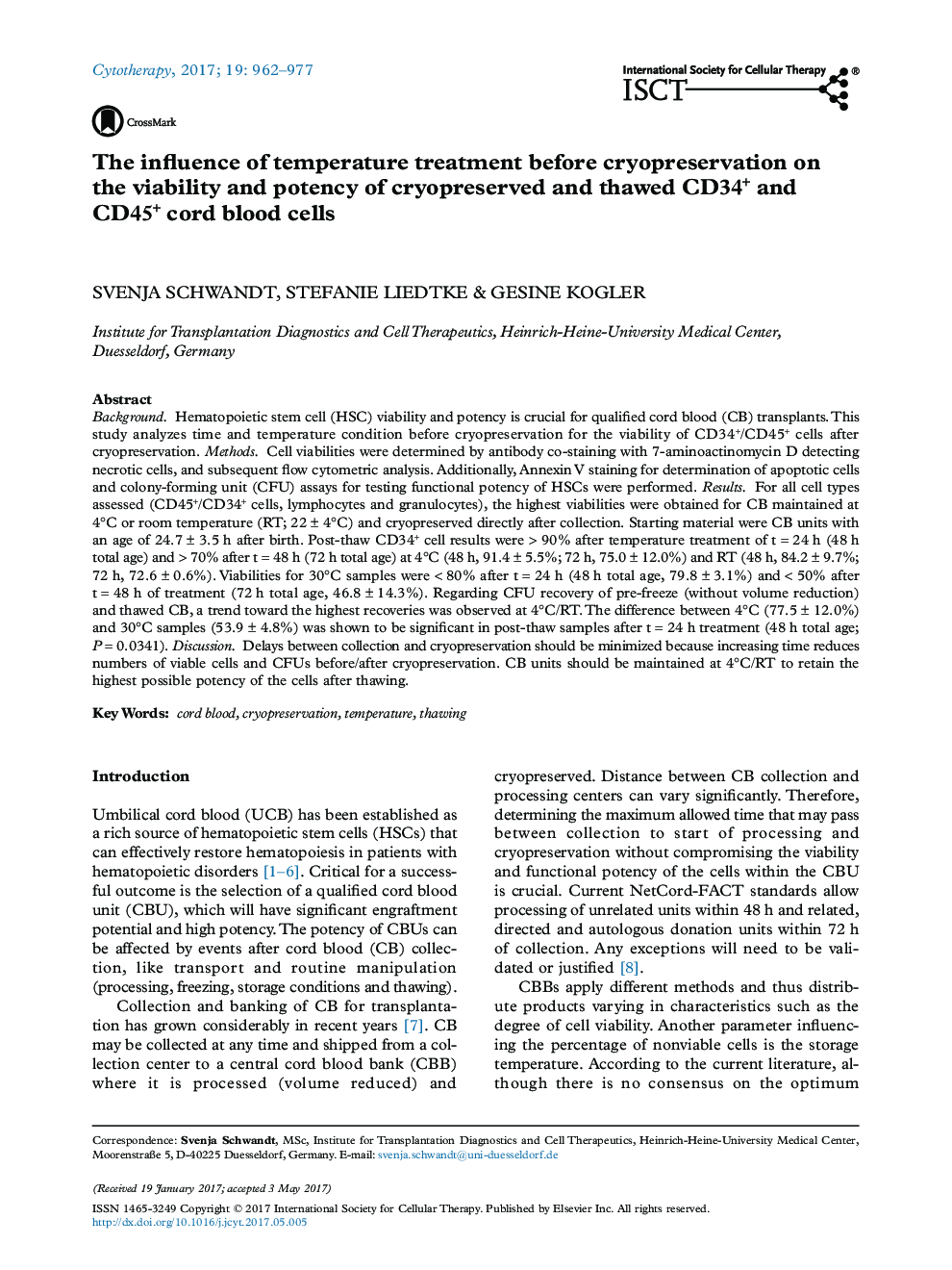| کد مقاله | کد نشریه | سال انتشار | مقاله انگلیسی | نسخه تمام متن |
|---|---|---|---|---|
| 5531374 | 1401793 | 2017 | 16 صفحه PDF | دانلود رایگان |

BackgroundHematopoietic stem cell (HSC) viability and potency is crucial for qualified cord blood (CB) transplants. This study analyzes time and temperature condition before cryopreservation for the viability of CD34+/CD45+ cells after cryopreservation.MethodsCell viabilities were determined by antibody co-staining with 7-aminoactinomycin D detecting necrotic cells, and subsequent flow cytometric analysis. Additionally, Annexin V staining for determination of apoptotic cells and colony-forming unit (CFU) assays for testing functional potency of HSCs were performed.ResultsFor all cell types assessed (CD45+/CD34+ cells, lymphocytes and granulocytes), the highest viabilities were obtained for CB maintained at 4°C or room temperature (RT; 22â±â4°C) and cryopreserved directly after collection. Starting material were CB units with an age of 24.7â±â3.5âh after birth. Post-thaw CD34+ cell results were > 90% after temperature treatment of tâ=â24âh (48âh total age) and > 70% after tâ=â48âh (72âh total age) at 4°C (48âh, 91.4â±â5.5%; 72âh, 75.0â±â12.0%) and RT (48âh, 84.2â±â9.7%; 72âh, 72.6â±â0.6%). Viabilities for 30°C samples wereâ<â80% after tâ=â24âh (48âh total age, 79.8â±â3.1%) andâ<â50% after tâ=â48âh of treatment (72âh total age, 46.8â±â14.3%). Regarding CFU recovery of pre-freeze (without volume reduction) and thawed CB, a trend toward the highest recoveries was observed at 4°C/RT. The difference between 4°C (77.5â±â12.0%) and 30°C samples (53.9â±â4.8%) was shown to be significant in post-thaw samples after tâ=â24âh treatment (48âh total age; Pâ=â0.0341).DiscussionDelays between collection and cryopreservation should be minimized because increasing time reduces numbers of viable cells and CFUs before/after cryopreservation. CB units should be maintained at 4°C/RT to retain the highest possible potency of the cells after thawing.
Journal: Cytotherapy - Volume 19, Issue 8, August 2017, Pages 962-977